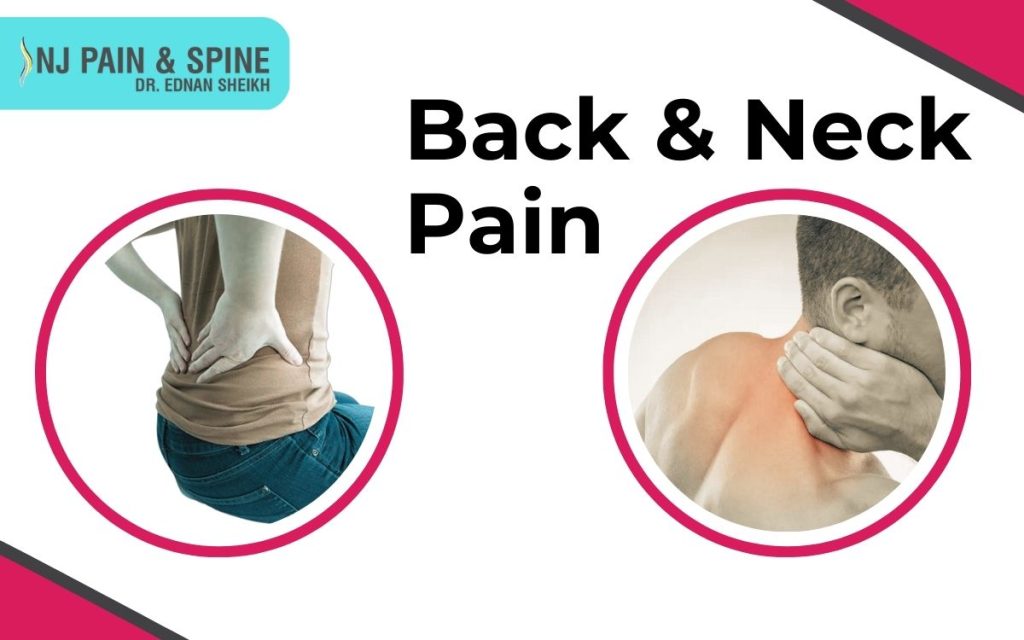
Muscle injuries, in which muscle fibers stretch too far and tear, are the most common cause of acute back and neck pain. Repetitive motions or heavy lifting can result in muscle injuries, as can overuse, including heavy lifting.
Even though muscle injuries sound like a small problem, the pain they cause can be excruciating. Treatments such as over-the-counter pain relievers, heat, or ice therapy, or stretching exercises usually alleviate muscle injuries within six weeks.
Back Pain and Causes
You may experience back pain in one localized area of your back, or you may experience it throughout your lower back. There might be a stab of pain following a sudden injury, and the pain may subside quickly or persist.
Usually, a more gradual pain begins mildly but becomes increasingly uncomfortable over time. The pain may be aggravated by certain movements or positions and relieved by others. As well as radiating down the back, back pain can also affect the legs, all the way down to the toes.
A back injury can damage a variety of tissues. Vertebrae can be crushed by severe compression injuries, such as those caused by falls. The bony arch at the back of a vertebra can be fractured by a severe twisting injury said by Pain management specialists.
Ligaments that guard spinal joints can be strained by abnormal movements. As a natural splint, when a spinal joint is damaged, the muscles over it go into spasm to fix the joint. If you then try to move that part of your back against the limiting factor of tightened muscles, you may experience even more pain.
Different types of injuries can damage the discs between your vertebrae. Disc damage increases as you age, when you lose the pliability and water-holding capabilities of the nucleus pulposus and the strong outer portion, the annulus fibrosus.
Neck pain and Causes
In addition to protecting the cervical spinal cord, the neck is part of the spine. Back pain often leads to neck pain because of similar conditions. The symptoms of neck pain may also radiate into your hand, as with back pain. It is possible that these symptoms will run down your arm and into your hand.
Occasionally referred symptoms can be relieved by altering the neck’s position, maybe stretching the neck away from the affected arm, when you have a ligament strain or minor damage to a disc. Unremitting pain is more often caused by a major disc problem. In addition to headaches and dizziness, neck problems can also cause headaches and dizziness due to muscle spasms or a vertebral fracture interfering with normal movement.
Joint wear and tear can cause pain in the neck with or without referred symptoms in the arms due to wear-and-tear arthritis. As much mobility and strength as possible should be maintained in the neck while avoiding straining the joints with heavy loads or strenuous sports. Depending on your symptoms and x-ray results, your Pain management specialist will tell you what type and amount of exercise you ought to be doing.
Treatment
Your back and neck pain will be relieved, and your movement will be improved. It is usually possible to manage neck pain at home once the cause has been identified and has improved. As part of your treatment plan, your provider may suggest the following treatments:
- Neck pain is often treated with pain medicines, such as nonsteroidal anti-inflammatory drugs (NSAIDs) and muscle relaxants, which ease inflammation and relieve pain in the neck.
- Exercises and movements that strengthen and improve the flexibility of the muscles and tendons in your neck may be taught to you by a physical therapist or fitness trainer.
- An electrical current is applied to the skin near your nerves with a TENS unit to break the pain signal causing discomfort. Before using a TENS unit, consult your healthcare provider.
- Pain can be reduced, and inflammation reduced with steroid injections near the nerve roots.
- Massage may help loosen tightened muscles contributing to your discomfort, or your provider may recommend acupuncture to relieve pain. The alignment of your spine can be done by an osteopath or chiropractor.
- Most neck pain causes do not require surgery. Nevertheless, you may need surgery if your vertebrae have shifted out of place or are putting pressure on your nerves.
Final words!
If your back and neck pain is severe, you may need to work with a Pain management specialist.




